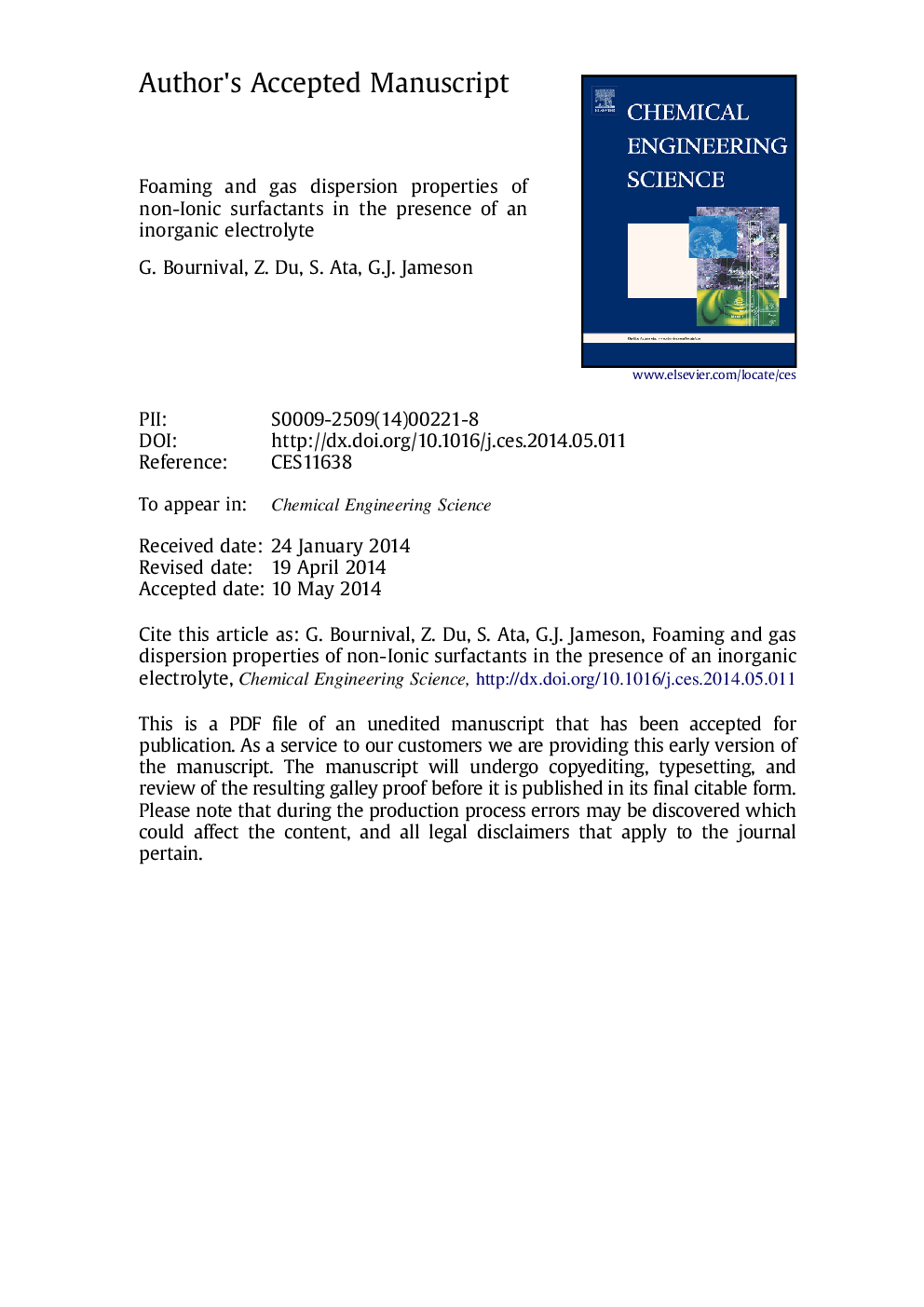| Article ID | Journal | Published Year | Pages | File Type |
|---|---|---|---|---|
| 6591083 | Chemical Engineering Science | 2014 | 25 Pages |
Abstract
Foams represent an important area of research due to their relevance in many industrial processes. Where there are geographical constraints, which can limit access to fresh water, there is an economic incentive in using recycled water, bore water and even seawater for industrial purposes. This creates a growing interest in determining the effect of inorganic electrolytes on foaming and gas dispersion properties of non-ionic surfactant solutions. The present study compares the foaming and gas dispersion properties of the non-ionic surfactants 1-pentanol, tri(propylene glycol) methyl ether, and poly(propylene glycol) 425. For all surfactants, the stabilisation mechanism was influenced by the concentration of surfactant and the presence of salt with PPG being affected to a lesser extent. Sodium chloride was observed to have a detrimental effect on foaming at higher surfactant concentrations but improved foaming at low surfactant concentrations. At low surfactant concentrations, the addition of salt improved foaminess by dampening the hydrophobic force. An increase in gas holdup with increasing surfactant concentration was observed and was attributed to a decrease in bubble size. For poly(propylene glycol) an initial decrease in gas holdup was observed at very low concentrations. Salt mainly affected gas dispersion properties at a higher concentration.
Related Topics
Physical Sciences and Engineering
Chemical Engineering
Chemical Engineering (General)
Authors
G. Bournival, Z. Du, S. Ata, G.J. Jameson,
